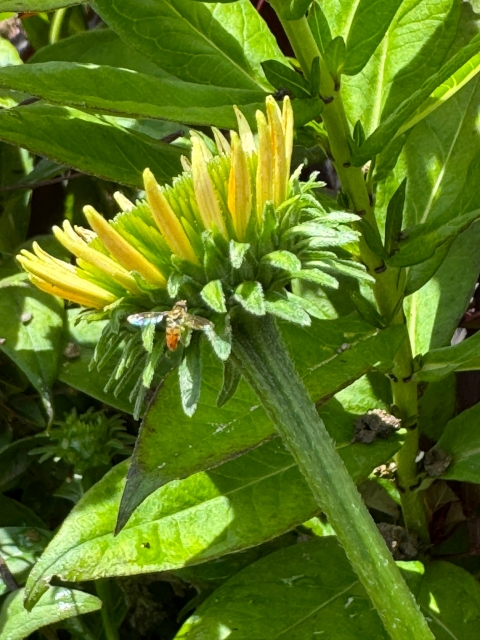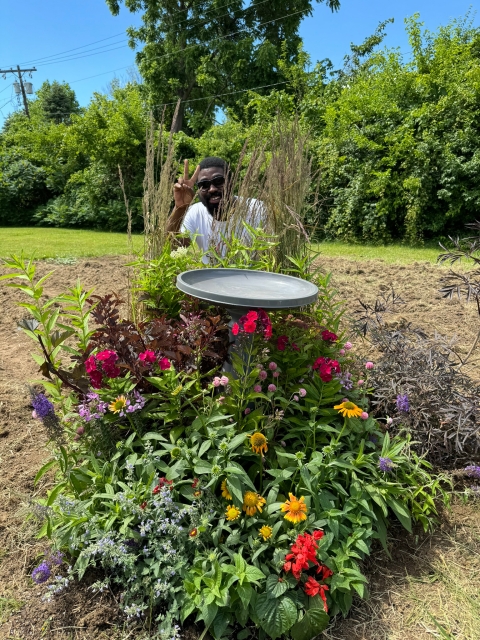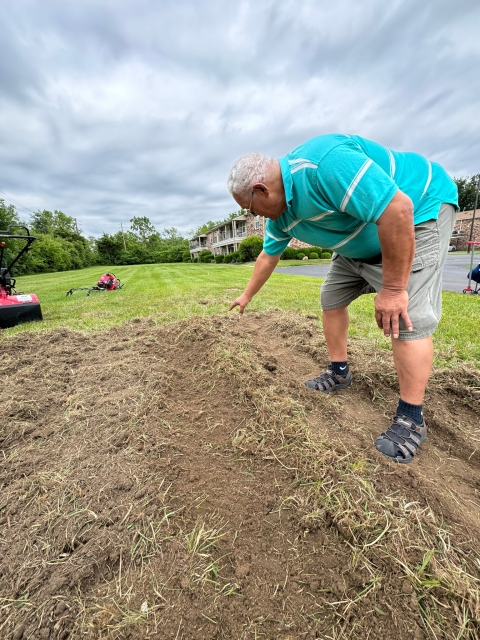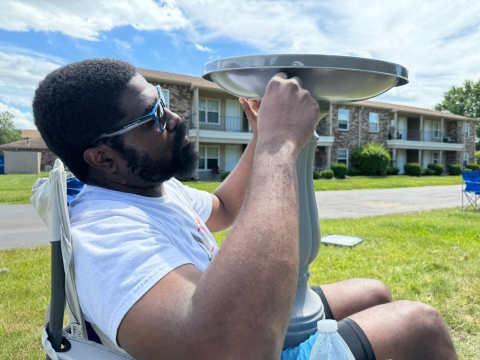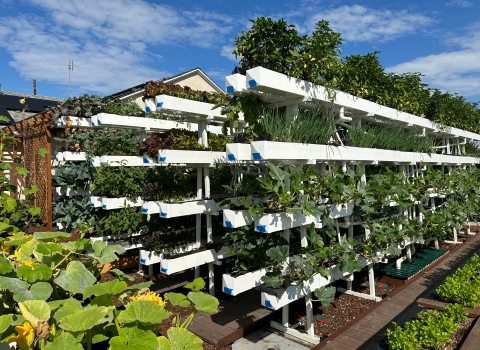As Pollinator Week and Juneteenth converge, we at the U.S. Fish and Wildlife Service want to shine a spotlight on the unique intersection of agriculture and environmental stewardship that’s happening beyond the lands and waters that we manage. Anybody can take action to help pollinators in their own community and make a difference.
Background and motivation
Ronald Davis, from Clinton, Maryland, pursued animal science at Tuskegee University but shifted to agricultural education. Currently, he's a doctoral student at Indiana University, focusing on Black agrarian futures. The idea for the garden began when Ron noticed an abandoned tennis court in his apartment complex. "I reached out to the complex manager to see if I could use the space and was informed that the tennis courts were being repurposed into pickleball courts, however, they could give me another space. That’s how it began, I asked!"
Incorporating a pollinator garden
As Ron planned his community garden, he included a pollinator garden to enhance the project’s success and visual appeal. "I know pollinators can have a huge impact on the success of a garden and I wanted my garden to be successful. Also, pollinator gardens are usually aesthetically pleasing, so I figured if we made the garden look like an inviting place, it would be more of an incentive for community members to participate."
Community impact and pollinator garden specifics
The garden has inspired community participation, with three families already involved. "Right now, everyone seems to enjoy the development of the garden. There’s a lot of community members who drive by and wave when I’m working in the garden." The pollinator-friendly plantings include native plants like Black-Eyed Susan, Swamp Milkweed, and Ninebark. "The pollinators needed no invitation. As soon as the pollinator garden was up, bees stopped by to say hello. The milkweed will attract monarchs. This was truly a sight to see." A pollinator fountain adds to the garden’s charm, providing water for birds, bees, butterflies, and other pollinators.
Educational outreach and Juneteenth significance
Ron plans to grow pumpkins for Halloween to engage children and is working on signage to encourage participation. "Right now I’m working on signage and marketing to get more of the community involved but right now, anyone can participate by just walking up." He sees the garden as a tribute to his Black ancestors. "Juneteenth acknowledges the end of slavery in the United States. This garden is a constant reminder that my Black ancestors sacrificed so much for me to have the ability to grow my own food and be free."
Future plans and advice
Ron plans to increase community participation and organize more events. "I want to grow the garden and get more participation from the community." His advice for aspiring gardeners: "Start! Don’t wait for the right time to start because I promise, there will never be a right time. Also, have a little imagination. If I couldn’t imagine a garden in the community, there wouldn’t be one." Inspired by the desire to be the change he wants to see, Ron hopes to inspire others. "Being the change I want to see in the world is what inspires me."
Working on the garden has solidified Ron’s identity as a Black agrarian and highlighted the community's need for agricultural knowledge. "The most rewarding part of my journey with the community garden has been uncovering how many people wanted a garden too but were too scared or didn’t know how to ask. Being a voice to people who don’t believe they have a voice is priceless."


